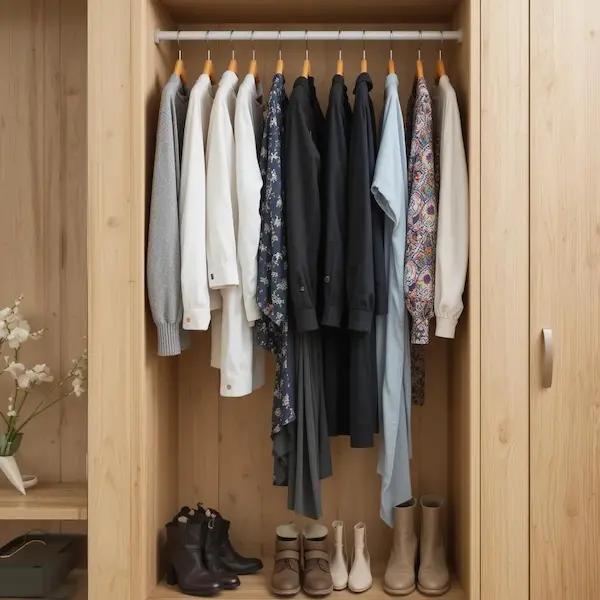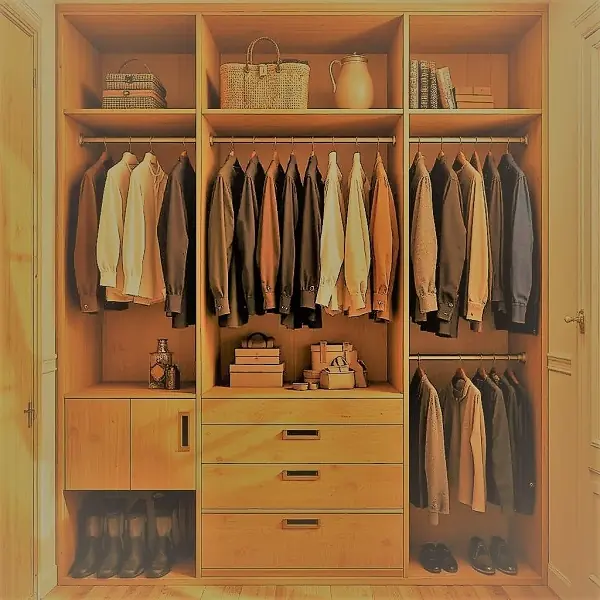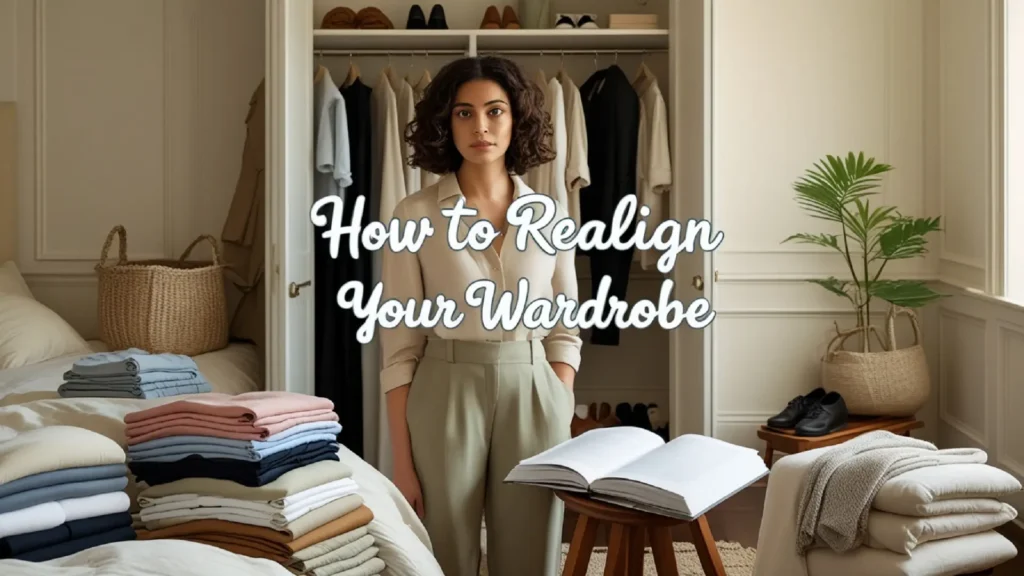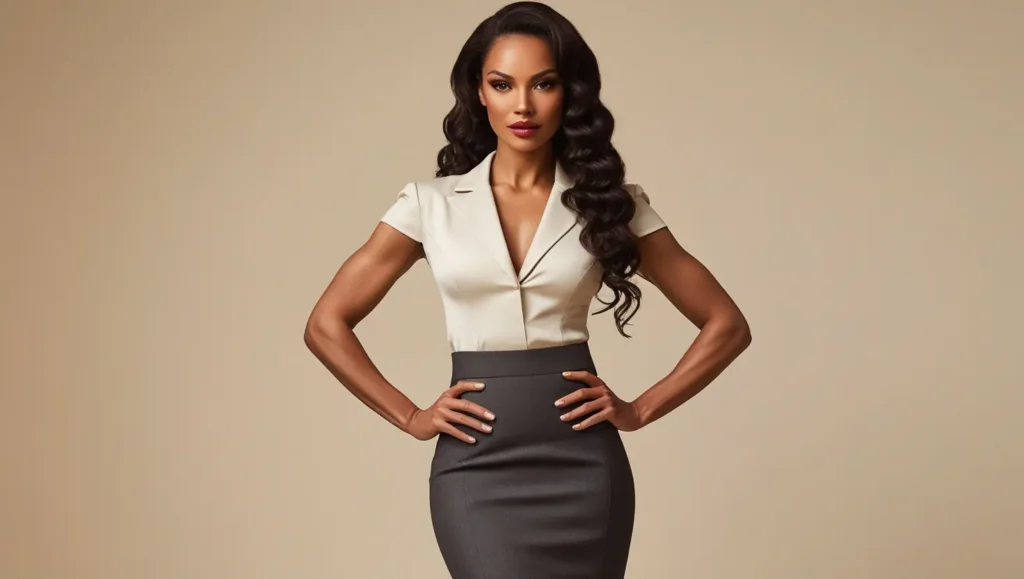A well-aligned wardrobe is the key to effortless style and confidence. It is a carefully curated selection of pieces that reflect your personal style, suit your lifestyle, and make getting dressed every day a breeze. Realigning your wardrobe makes sure that everything you buy has a purpose.
This guide will walk you through the process of assessing, refining, and curating your wardrobe, so you can create a functional, stylish collection that works for you year-round.
Look at What You Actually Need
Declutter and Purge Clothes: If you are tired of a chaotic wardrobe, it’s time to skip the tricks and focus on a simplified wardrobe. Take everything out of your closet. Try each item on. Ask yourself if it still fits your body shape, if you love it, or if it’s in good condition.
Let go of pieces you haven’t worn in the last year. The items don’t make you feel good, consider donating gently used items or selling them on eBay or Rebelle or at a consignment store. Recycle which have been worn out or damaged beyond repair. For every item you buy, donate or sell the unused one.
This decluttering process allows you to remove any items that don’t work for you. By clearing out your wardrobe, and you’ll find yourself getting ready with so much easier.
Analyze Gaps: Once you’ve decluttered, look at what’s left. Do you have basic pieces like a good pair of jeans, a white shirt, or a simple black dress? Are there gaps in your wardrobe—such as a cozy winter coat, a versatile blazer, or shoes for both casual and formal occasions? Personalize storage systems.
This will help you identify what you need to add for a more complete wardrobe.
Identify Your Personal Style
Evaluate What You Wear Regularly: Pay attention to what you instinctively wear most days. Do you gravitate toward bohemian, minimalist, professional, or casual looks? Are you drawn to specific colors, prints, or cuts?
This will help you identify the common themes in your wardrobe and ensure your future purchases align with those preferences.
Create a Pinterest Board: Collect images of outfits that resonate with you. Look for recurring patterns in color, texture, and silhouettes.
You can create a Pinterest board or even cut out images from magazines to keep a visual representation of your style. This will serve as a guide when shopping and organizing your wardrobe.
Consider Lifestyle and Work Needs: Think about your daily routine and lifestyle. Prioritize comfort with stylish loungewear or casual separates.
If you work in a corporate environment, ensure you have blazers, skirts, and professional dresses in your closet. Similarly, factor in weekend wear and evening attire if you frequently attend social events.
Organize Your Closet
A well-organized closet helps minimize daily stress and makes choosing outfits easier.
Group by Category
Storing similar items, such as jackets or button-down shirts, tops, bottoms, dresses, and outerwear together streamlines clothing storage. Buy racks and hangers, storage bins and baskets, shelf dividers, and drawers to organize your clothes categorically. This helps you find what you need.
Easy Access
Place your everyday essentials at eye level. It will give you a quick access. Reserve higher or lower shelves for items that are used less often.
Seasonal Storage
Store out-of-season clothing in labeled bins or vacuum-sealed bags to keep your closet neat and manageable.
Identify the Core Wardrobe Essentials

Timeless Staples: Every wardrobe should have a solid foundation of timeless essentials. These items don’t go out of style and can be mixed and matched for different occasions.
Key staples might include a classic white button-down shirt, a tailored black blazer, a pair of well-fitting jeans, a little black dress, and a cozy cardigan.
These essentials will serve as the building blocks for your outfits.
Neutral Basics: Having a strong neutral color palette e.g. black, white, beige, navy, gray, ensures that your wardrobe is highly versatile. Neutrals are easy to pair with each other and serve as the base for bolder or trendier colors and patterns.
For instance, a beige trench coat, black pants, or white blouses can be easily combined with any accessories, shoes, or jackets you choose.
Versatile Shoes: The right shoes can make or break an outfit. Look for shoes that are adaptable to different occasions.
Black ankle boots for both casual and dressy looks.
Classic ballet flats for comfort and style.
Neutral-colored heels that can be paired with everything from jeans to dresses.
A good pair of sneakers for casual days or running errands is also essential.
Mind Your Body Shape and Fit
Choose Flattering Fits: Every woman has a unique body shape and shape changes over time. To look your best, it’s crucial to understand your proportions and select clothing that complements your figure.
If you’re hourglass-shaped, a belted waist might highlight your curves. If you have a pear shape, A-line skirts or flared pants can balance your proportions.
Experiment with different fits to find the ones that make you feel confident.
Tailoring: While off-the-rack clothing is made for the average body, tailoring can elevate a simple piece into something special. Investing in a good tailor to adjust hems, waistlines, or sleeves to fit your exact measurements can make a world of difference.
Even inexpensive clothes can look expensive when they fit you perfectly.
Identify Trends and Incorporate them Selectively
Seasonal Trends: Fashion trends change each season. You don’t need to overhaul your wardrobe every time a new trend emerges.
Instead, choose trends that you genuinely like and that will work with your existing wardrobe. For example, you might invest in a trendy coat or handbag that will add some fresh energy to your outfits, but avoid getting caught up in every passing fad.
Be Honest to Your Style: Don’t feel pressured to follow every trend you see on social media or in magazines. Stick to the trends that align with your personal style.
For minimalist looks, a few simple, sleek pieces in trendy colors will work
For more eclectic style, you might experiment with unique patterns or textures without overcommitting.
Importance of Versatility

Mix and Match: Building a wardrobe of versatile pieces allows you to create multiple outfits from fewer items. Invest in items that can transition easily from one setting to another, such as a black dress that can be worn with flats for daywear or heels for an evening event.
A versatile wardrobe saves you money and space. Invest in versatile pieces that can be mixed and matched with other items. This system contributes to sustainable and comfortable fashion practices.
Look for tops that pair well with both skirts and pants, or a pair of shoes that work for both casual and semi-formal occasions. Choose natural colors for versatile looks. Buy well-fitted clothing based on colors that match with the accessories you already have in your closet.
Layering Pieces: Layering is a great way to extend the life of your wardrobe across seasons. One of the unspoken rules of layering clothes is playing with different textures. Combine wool, cotton, and denim for a contrasting layering.
A simple dress can be worn with a cardigan or jacket during the cooler months. A scarf or belt can completely transform an outfit, giving it a fresh twist without needing to buy something new.
Layering also lets you create a variety of looks from the same base pieces, keeping your wardrobe fresh and exciting.
Maintain Quality First
Invest in Quality Pieces: It’s better to have a few high-quality items than a closet full of cheap, low-quality clothes. Quality pieces last longer and often fit better. So, you have to buy less and spend less on unnecessary items. It not only saves spaces on your wardrobe but saves you money in your pocket.
For example, investing in a well-made leather bag or a wool coat can be a long-term purchase that serves you for years. Quality items may cost more initially, but they save money in the long run as they don’t need to be replaced frequently.
Sustainability: Opt for clothing made from sustainable materials such as organic cotton, wool, or bamboo. Look for brands that prioritize ethical production processes. Remove environmentally damaging clothes from your wardrobe to reduce the clutter.
By reducing your consumption of fast fashion, you’ll not only contribute to the environment but also build a more thoughtful, intentional wardrobe.
Get Updated Depending on Season
Rotate Clothes by Season: To maintain a functional and organized closet. Rotate your clothing on every seasons. Store summer clothes like shorts and tank tops in bins during the winter, or in a separate almirah, and swap them out for warmer pieces like sweaters, scarves, and coats.
This keeps your wardrobe manageable and ensures you always have the right clothes available for the season.
Incorporate Accessories: Accessories are a great way to update your look without buying new clothes. For colder months, scarves, gloves, and hats add both warmth and style. In the summer, hats, sunglasses, and statement jewelry can give your outfit a fresh twist.
Accessories are usually more affordable than full outfits, and they can completely transform how your wardrobe looks.
Evaluate Your Wardrobe Regularly
Periodic Assessment: Set aside time every few months to reassess your wardrobe. Trends, personal preferences, and body shapes change over time, so periodically decluttering and reviewing your closet will help keep it in line with your current lifestyle and needs. This is also a great time to reorganize your wardrobe to keep it neat and easy to navigate.
Celebrate What You Have: Before heading out to buy new clothes, spend time re-examining the pieces you already own. Try new combinations, or layer items in a different way to create fresh outfits. Often, rediscovering clothes you forgot about or styling them in a new way can breathe new life into your wardrobe without spending money.
Set a Budget Friendly Wardrobe
Plan Purchases Wisely: Shopping with a budget ensures that you don’t overspend and that each item serves a specific purpose in your wardrobe.
When you identify gaps, set a budget for each category. Increase or decrease budgets on shoes, outerwear, or accessories depending on the necessities. A well-curated wardrobe with fewer but meaningful items will serve you better than one full of impulse buys.
Build Slowly: Realign your wardrobe gradually, adding one or two pieces each season rather than buying everything at once.
This gives you time to assess your choices and make thoughtful decisions. It also helps you avoid buyer’s remorse and ensures that every new item fits seamlessly into your existing wardrobe.
Realigning your wardrobe is a powerful way to bring clarity, simplicity, and style to your daily routine. By thoughtfully assessing your current collection, identifying your personal style, and investing in quality, versatile pieces, you can build a closet that serves your needs and reflects who you are.
Remember, the goal isn’t to have a closet full of clothes, but one that makes getting dressed easier, boosts your confidence, and allows you to feel your best.
With a little effort and planning, your wardrobe will not only look great but also work harmoniously with your lifestyle—empowering you to always put your best foot forward.




